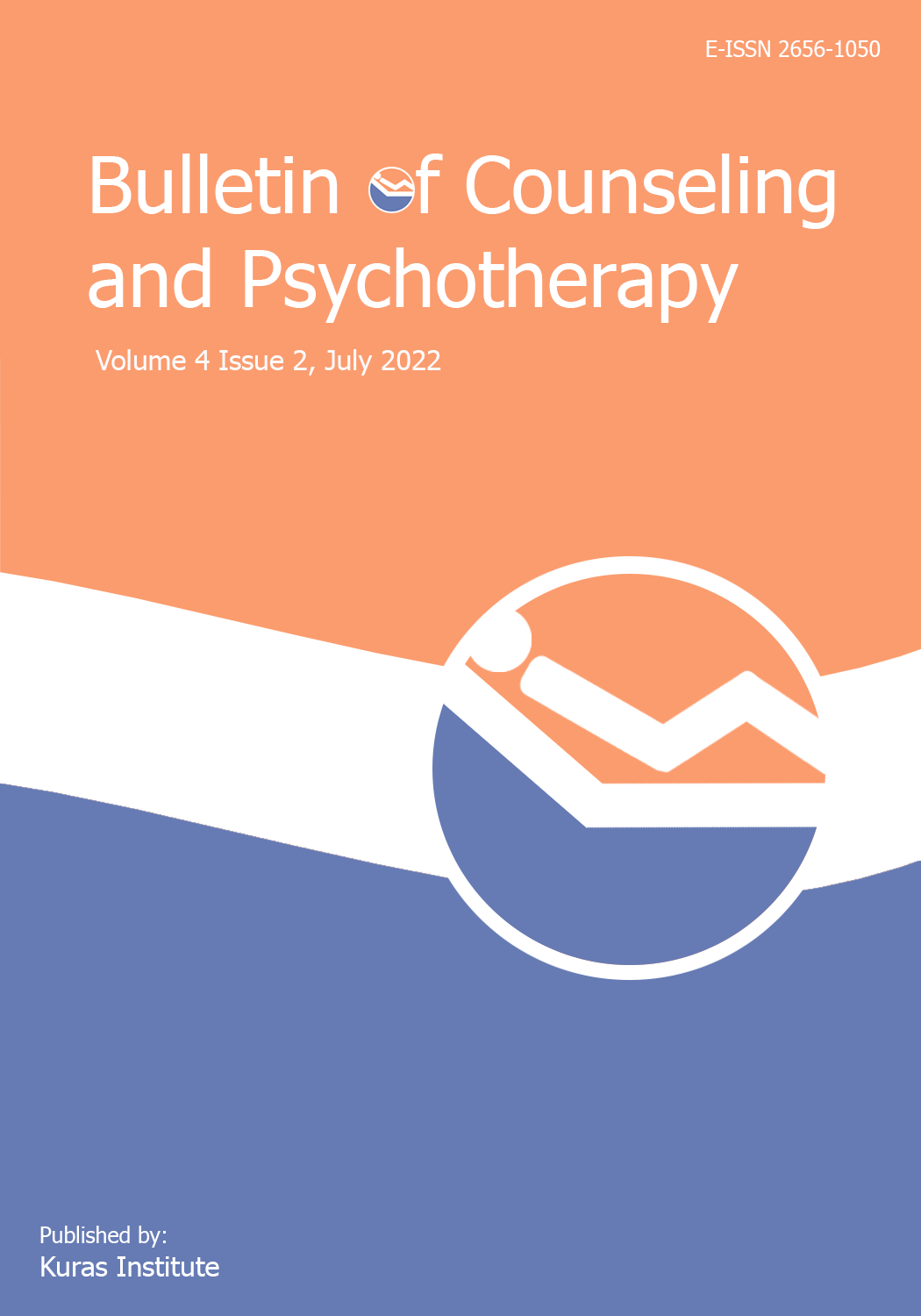Pengalaman Remaja Perempuan Melakukan Deliberate Self-Harm (DSA): Sebuah Kajian Fenomenologis
Abstract
Self harm or Deliberate Self-Harm (DSH) is carried out with the intention of intentionally injuring a member of the body without any suicidal intent. Previous research has stated that adolescent girls are the most vulnerable group to DSH. DSH behavior in adolescence that is repeated with increasing intensity increases the risk of suicide in adulthood. This research was conducted to find out how the first experience of DSH behavior was carried out by female adolescents and how self-harm was used. A qualitative approach with the type of generic qualitative study is carried out to answer these questions. Participants were selected by snowball sampling technique with the characteristics of female adolescents aged 12-23 years and had DSH in the last three months. Data were collected and processed using thematic analysis. The results show that the teenage girls in this study have been doing self-harm for more than five years and it begins by looking at social media which shows that self-harm can be a solution to the problems they face. The methods of self-harm and the depth of injury that arise due to DSH behavior are increasingly varied and increase the risk for the perpetrator. DSH behavior is important to pay attention to considering the risks and dangers it poses and has the potential to increase the possibility of suicide.
Downloads
References
Bresin, K., & Schoenleber, M. (2015). Gender differences in the prevalence of nonsuicidal self-injury: A meta-analysis. Clinical psychology review, 38, 55-64. https://doi.org/10.1016/j.cpr.2015.02.009
Chen, R., An, J., & Ou, J. (2018). Suicidal behaviour among children and adolescents in China. The Lancet Child & Adolescent Health, 2(8), 551-553. https://doi.org/10.1016/S2352-4642(18)30170-6
Chen, R., Liu, J., Cao, X., Duan, S., Wen, S., Zhang, S., ... & Lu, J. (2020). The relationship between mobile phone use and suicide-related behaviors among adolescents: the mediating role of depression and interpersonal problems. Journal of affective disorders, 269, 101-107. https://doi.org/10.1016/j.jad.2020.01.128
Chen, R., Wang, Y., Liu, L., Lu, L., Wilson, A., Gong, S., ... & Ou, J. (2021). A qualitative study of how self-harm starts and continues among Chinese adolescents. BJPsych open, 7(1). https://doi.org/10.1192/bjo.2020.144
Faradiba, A. T., Paramita, A. D., & Dewi, R. P. (2021). Emotion dysregulation and deliberate self-harm in adolescents. Konselor, 11(1). https://doi.org/10.24036/02021103113653-0-00
Fox, C., & Hawton, K. (2004). Deliberate self-harm in adolescence. Jessica Kingsley Publishers. Google Scholar
Fox, C. L., & Butler, I. (2007). ‘If you don't want to tell anyone else you can tell her’: Young people's views on school counselling. British Journal of Guidance & Counselling, 35(1), 97-114. https://doi.org/10.1080/03069880601106831
Gratz, K. L. (2001). Measurement of deliberate self-harm: Preliminary data on the Deliberate Self-Harm Inventory. Journal of psychopathology and behavioral assessment, 23(4), 253-263. https://doi.org/10.1023/A:1012779403943
Kocourkova, J., Koutek, J., & Hrdlicka, M. (2009). Self-harm in adolescence: a girl who swallowed needles. Neuroendocrinology Letters, 30(6), 705. Google Scholar
Larsen, K. (2009). Self-Injury in Teenagers, A Reasearch Paper, Menomonie: University of Wisconsin-Stout. Google Scholar
McMahon, E. M., Keeley, H., Cannon, M., Arensman, E., Perry, I. J., Clarke, M., ... & Corcoran, P. (2014). The iceberg of suicide and self-harm in Irish adolescents: a population-based study. Social psychiatry and psychiatric epidemiology, 49(12), 1929-1935. https://doi.org/10.1007/s00127-014-0907-z
McAndrew, S., & Warne, T. (2014). Hearing the voices of young people who self‐harm: Implications for service providers. International journal of mental health nursing, 23(6), 570-579. https://doi.org/10.1111/inm.12093
Moran, P., Coffey, C., Romaniuk, H., Olsson, C., Borschmann, R., Carlin, J. B., & Patton, G. C. (2012). The natural history of self-harm from adolescence to young adulthood: a population-based cohort study. The Lancet, 379(9812), 236-243. https://doi.org/10.1016/S0140-6736(11)61141-0
National Collaborating Centre for Mental Health (UK (2004). Self-Harm: The Short-Term Physical and Psychological Management and Secondary Prevention of Self-Harm in Primary and Secondary Care. Leicester (UK): British Psychological Society (UK). PMID: 21834185. Google Scholar
Percy, W. H., Kostere, K., & Kostere, S. (2015). Generic qualitative research in psychology. The qualitative report, 20(2), 76-85. Google Scholar
Victor, S. E., Muehlenkamp, J. J., Hayes, N. A., Lengel, G. J., Styer, D. M., & Washburn, J. J. (2018). Characterizing gender differences in nonsuicidal self-injury: Evidence from a large clinical sample of adolescents and adults. Comprehensive psychiatry, 82, 53-60. https://doi.org/10.1016/j.comppsych.2018.01.009
Veague, H. B., & Collins, C. (2009). Cutting and Self-harm. Infobase Publishing. Google Scholar
Copyright (c) 2022 Andi Tenri Faradiba, Zainal Abidin

This work is licensed under a Creative Commons Attribution 4.0 International License.
Authors who publish with this journal agree to the following terms:
1) Authors retain copyright and grant the journal the right to first publication, with the work simultaneously licensed under the Creative Commons Attribution that allows the sharing of articles published with the acknowledgement of authorship and the initial publication in this magazine.
2) The authors are authorized to make additional contracts separately for distribution of the version of the work published in this journal (for example, publication in an institutional repository or as a chapter of the book), as long as there is recognition of authorship and initial publication in this journal.
3) Authors are authorized and encouraged to publish and distribute their work online (for example, in institutional repositories or on their personal pages) at any time before or during the editorial process, as it increases the impact and reference of the published work.







